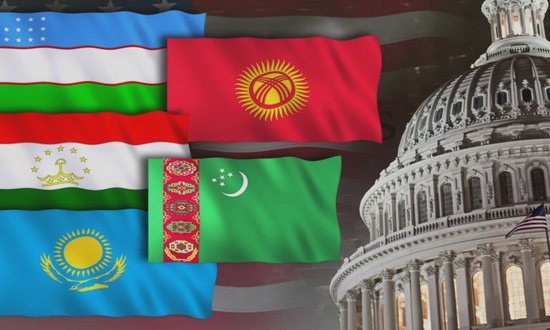"The United States was among the first countries to welcome the independence of Kazakhstan, the Kyrgyz Republic, Tajikistan, Turkmenistan, and Uzbekistan and has worked consistently over the last three decades to support the security, development, and prosperity of each of these countries. Central Asia has always been the strategic and commercial crossroad of civilizations between Europe and Asia. The United States’ primary strategic interest in this region is to build a more stable and prosperous Central Asia that is free to pursue political, economic, and security interests with a variety of partners on its own terms; is connected to global markets and open to international investment; and has strong, democratic institutions, rule of law, and respect for human rights. A stable and secure Central Asia contributes directly to U.S. efforts to counter terrorism, support regional stability, promote energy security, and enhance economic prosperity in the region and beyond," reads the report..
According to the statement, to that end, the United States has provided over $9 billion in direct assistance to support peace and security, democratic reform, and economic growth, as well as meet humanitarian needs. Equally important, the United States has led the World Bank, International Monetary Fund, European Bank for Reconstruction and Development, and the Asian Development Bank in extending over $50 billion in credit, loans, and technical assistance designed to support the development of the region. The U.S. private sector, meanwhile, has invested over $31 billion in commercial ventures in the region, generating thousands of local jobs and building human capacity. Finally, the United States has built strong people-to-people ties with each of the countries of Central Asia, including by directly funding over 40,000 student and professional exchanges. Large numbers of Central Asians have immigrated to assorted American cities and now make up vibrant and dynamic diaspora communities that retain deep connections with their homelands.
"Since the previous United States Strategy for Central Asia was approved in 2015, new leaders in the region have created new openings for reform-oriented development, intraregional connectivity and cooperation, and greater U.S. engagement. Specifically, new governments in the region have indicated a deeper commitment to pursue political and economic reform, including through bilateral cooperation with the United States. In addition, improvements in interregional relationships and a growing appreciation of the value of working together as a regional group have expanded the potential for U.S. engagement through the C5+1 platform. Central Asian states’ efforts to increase foreign investment and attract United States business is increasing the willingness of Central Asian leaders to implement rule of law reforms and comply with international norms," said the report.
The new strategy’s public version is sorted into six policy objectives: 1) Support and strengthen the sovereignty and independence of the Central Asian States, individually and as a region; 2) Reduce terrorist threats in Central Asia; 3) Expand and maintain support for stability in Afghanistan; 4) Encourage connectivity between Central Asia and Afghanistan; 5) Promote rule of law reform and respect for human rights and 6) Promote United States investment in and development of Central Asia.
Photo source: picture from an open source
